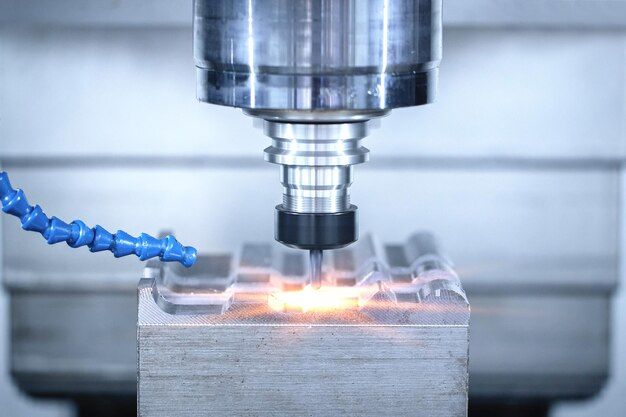Unlock your product's potential with our One-stop solutions!
+86-755-83222882

GET QUOTE
What is Flash in Injection Molding?
Flash in injection molding is a common defect that occurs when excess plastic material escapes from the mold cavity during the injection process. This thin layer of plastic, which solidifies on the parting line or other areas of the mold, can detract from both the aesthetics and functionality of the final product. Preventing and addressing flash is crucial to maintaining the quality and precision of molded parts. This article delves into the causes of flash in injection molding, offers practical solutions to fix it, and provides tips on how to prevent it from occurring in the first place.
What is Flash in Injection Molding?
Injection molding flash refers to the unwanted, excess plastic that leaks out of the mold cavity and solidifies on the surface of a part. This defect primarily occurs at the parting line where the two halves of the mold meet, but it can also emerge in other areas where the mold may not be sealed properly.
The presence of flash can compromise the quality of the molded part, requiring additional post-processing to remove it. In severe cases, flash can even damage the mold, leading to costly repairs and production delays. Understanding the root causes of flash is essential for anyone involved in the injection molding process.
What are the Causes of Injection Molding Flash?
1. Parting Line Discrepancies
The parting line is the junction where the two halves of the mold come together. Any misalignment, debris, or wear in this area can prevent the mold from closing properly, allowing molten plastic to seep out. Over time, repeated cycles can exacerbate this issue, leading to more significant flash formation.
2. Venting Issues
Proper venting is critical to allow air to escape as molten plastic fills the mold cavity. If the vents are too small or improperly placed, trapped air can increase internal pressure, forcing plastic to escape through small gaps. Venting issues can also arise from clogged or worn-out vents, which need regular inspection and maintenance.
3. Clamping Pressure Problems
Clamping pressure is the force applied to keep the mold closed during the injection process. If this pressure is too low, the mold halves may separate slightly under the force of the injected plastic, leading to flash. Conversely, excessive clamping pressure can damage the mold or part, so it's essential to find the right balance.
4. Low Viscosity
Viscosity refers to the flow characteristics of molten plastic. Low-viscosity materials flow more easily, increasing the likelihood of leakage, especially if the mold is not perfectly sealed. Factors like melt temperature, injection pressure, and material type can all influence viscosity, and adjustments may be necessary to minimize flash.
5. Mold Overfilling
Overfilling occurs when too much plastic is injected into the mold cavity, exceeding the capacity of the mold. This excess material can be forced out through any available gaps, leading to flash. Overfilling is often a result of incorrect shot size settings or improper process control.
How to Address Flash Problems in Injection Molding?
Addressing flash issues in injection molding is crucial for maintaining quality and reducing costs. Strategies to manage flash include optimizing mold design, adjusting process parameters like pressure and temperature, and ensuring regular maintenance of molds. Implementing these steps helps in minimizing unwanted plastic overflow, improving product aesthetics, and functionality. For a comprehensive understanding of how to effectively tackle flash problems, check out the detailed guidance in the article "How to Address Flash Problems in Injection Molding?".
How to Avoid Flash in Injection Molding?
Ensure Proper Mold Alignment and Maintenance
Regular maintenance and cleaning of the mold are essential to prevent flash. Ensure that the mold halves are perfectly aligned, and that all debris or residual plastic is removed before each production run. Use precision tools to check the parting line for any wear or damage, and repair or replace mold components as necessary.
Optimize Clamping Pressure
Proper clamping pressure is crucial to avoid flash. Calculate the appropriate tonnage based on the part's geometry, material, and injection pressure. Monitor the clamping force regularly to ensure that it remains consistent throughout the production cycle.
Design for Manufacturability (DfM)
Incorporating DfM principles into the mold design can significantly reduce the risk of flash. Consider the placement of gates, the thickness of walls, and the design of the parting line to minimize potential leakage points. A well-designed mold will naturally resist flash formation, even under challenging processing conditions.
Use a Flash-Free Mold Design
When aesthetics and functionality are critical, investing in a flash-free mold design can be worthwhile. These molds are engineered with tight tolerances and precise fitment to eliminate any gaps where plastic could escape. Although more expensive, they can save time and money in the long run by reducing the need for post-processing.
Control the Injection Rate and Pressure
Slowing down the injection rate can help reduce the pressure inside the mold, minimizing the chances of flash. Adjusting the injection speed and pressure to match the material's flow characteristics will help maintain a controlled and consistent fill, reducing the risk of excess material escaping.
How to Fix Flash in Injection Molding?
1. Hot Air Treatment
When dealing with injection molding flash, one option is to utilize hot air to melt the excess material into the plastic. However, this technique is best suited for thin flashes; thicker ones might not integrate smoothly into the part's surface and could impact the final appearance. Hot air can also serve as a secondary deflashing method following mechanical removal of the flash.
2. Cryogenic Deflashing
Considered the most effective solution, cryogenic deflashing involves cooling the part with liquid nitrogen to a temperature that allows easy removal of the flash. This process maintains the part's finish, although commercial cryogenic deflashing equipment can be costly.
3. Manual Deflashing
A widely used method due to its adaptability, manual deflashing entails manually cutting away flash using tools like scissors, knives, or grinders. This approach targets flashes along the parting line and can be applied to nearly all engineering materials. Manual deflashing typically yields high-quality results, depending on the skill of the operator, and allows for quick inspection during the process.
4. Open Flame Treatment
An open flame can be used to remove flash by melting it off the part. This method should be used with caution, as it can alter the surface finish and potentially affect subsequent processing steps like painting or bonding. It's typically used for thicker, more stubborn flashes that are difficult to remove mechanically.
Related Blogs:
How accurate is injection molding?
What products are made from injection molding?
Other Common Injection Molding Defects
While flash is a significant concern in injection molding, other defects can also affect the quality of the final product. Understanding these issues and their causes can help you implement effective prevention strategies:
Weld Lines
Weld lines occur when two flow fronts of molten plastic meet but do not fully meld, creating a visible line or weakness in the part. This defect is often caused by low temperatures or improper flow rates and can be mitigated by increasing the injection temperature and pressure.
Surface Delamination
Surface delamination refers to the peeling or flaking of the outer layer of the molded part. This defect is usually due to contamination or excessive moisture in the material. Ensuring that the raw material is properly dried and free of impurities can prevent delamination.
Jetting
Jetting appears as wavy or irregular flow lines on the surface of the part, typically caused by uneven cooling or high injection speed. Reducing the injection speed and ensuring uniform cooling can help prevent this defect.
Cracking
Cracks in the molded part are often the result of internal stresses, which can be caused by low mold temperatures, slow injection speeds, or improper cooling. Increasing the mold temperature and injection speed can reduce stress and prevent cracking.
Flow Lines
Flow lines are circular or wavy patterns that occur due to variations in the plastic's cooling rate as it flows through the mold. These can be minimized by optimizing the injection speed, pressure, and mold temperature to ensure a consistent flow.
Conclusion
Injection molding flash is a common defect that can significantly impact the quality and cost of your molded parts. By understanding its causes and implementing the preventive measures outlined in this article, you can reduce the occurrence of flash and improve the efficiency of your injection molding process. Regular mold maintenance, careful control of process parameters, and thoughtful mold design are key to producing high-quality, flash-free parts.
For further assistance or to discuss your specific injection molding needs, contact SZOMK for expert advice and custom solutions tailored to your project requirements.
FAQ
What is the best method to prevent flash in injection molding?
The most effective methods to prevent flash include ensuring proper mold alignment, optimizing clamping pressure, and controlling the injection rate. Design for Manufacturability (DfM) principles and using a flash-free mold design can also significantly reduce the risk of flash.
How does cryogenic deflashing work?
Cryogenic deflashing involves cooling the molded part with liquid nitrogen until the flash becomes brittle and easily removable. This method is highly effective for complex parts and does not affect the part's finish.
Why is low viscosity a problem in injection molding?
Low viscosity allows molten plastic to flow too easily, increasing the likelihood of leakage and flash formation. Adjusting the temperature, pressure, and material composition can help manage viscosity and reduce flash.

